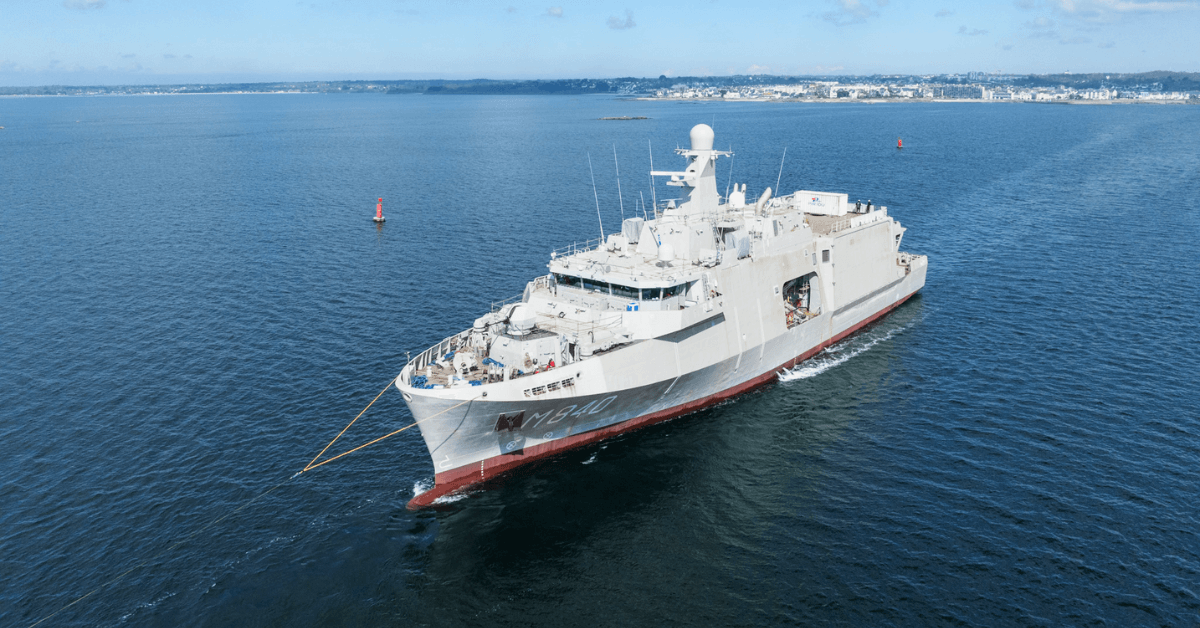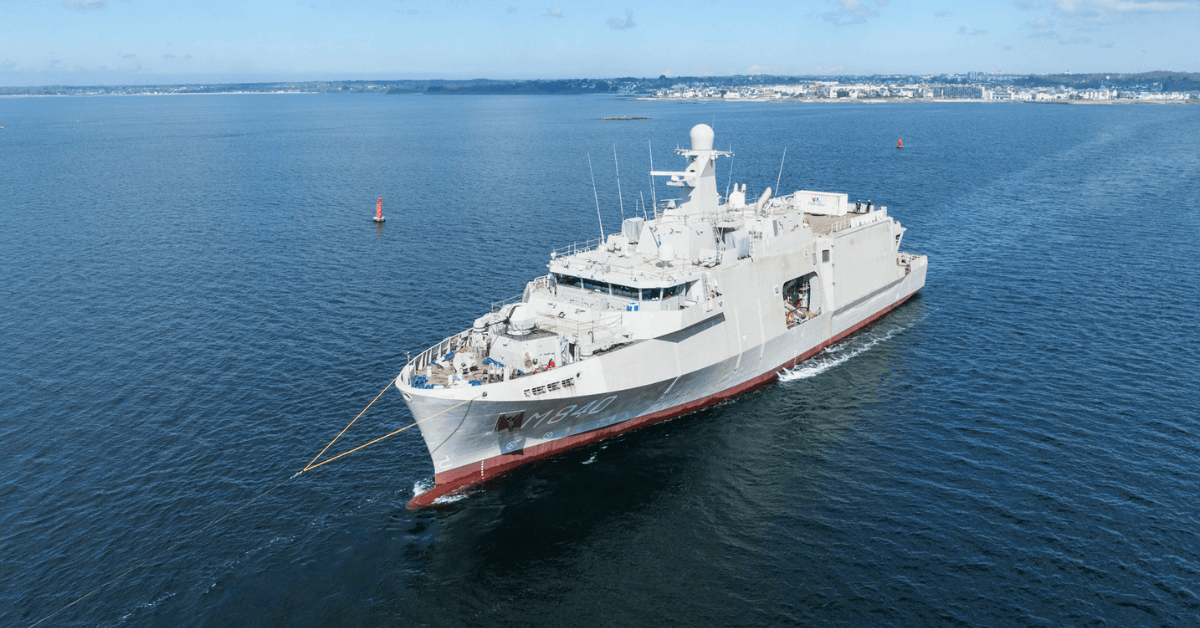
Pirates Attack Ghanaian Vessel Firing Warning Shots, 3 Missing Crew Found Safe
April 1, 2025
Iran Seizes Two Tankers With 3 Million Litres Of Smuggled Diesel In Persian Gulf
April 1, 2025
On March 27th 2025, Vlissingen, the mine countermeasure vessel for the Royal Netherlands Navy, began its first sea trials from Concarneau, France.
It is the second ship in a series designed to bolster naval defense capabilities through advanced, unmanned technologies. The sea trials aim to test the vessel’s performance in real-world conditions before its expected delivery by the end of 2025.
The Vlissingen is the first vessel in the series intended for the Royal Netherlands Navy. Its sea trials are part of an existing testing phase designed to assess various critical systems, including propulsion and maneuverability.
A series of additional sea trails will be conducted to ensure all systems are thoroughly tested before the ship is officially delivered.
The rMCM programme is being led by Belgium Naval & Robotics, a consortium consisting of Naval Group and Exail. The programme aims to deliver advanced mine countermeasure vessels by integrating cutting-edge, unmanned technology.
Kership, a joint venture between Piriou and Naval Group, is responsible for the construction and assembly of the vessels, while Exail takes charge of developing the drone mission systems that are crucial for the vessels’ mine-clearing operations.
The vessel will be built in both Belgium and France, with the majority of drones being produced and maintained at Exail’s Belgian subsidiary in Ostend.
All 12 vessels ordered under the rMCM programme are scheduled to be delivered by the end of 2030.
The first day at sea tested the vessel’s propulsion system and maneuverability. Further trials will test all the operational systems before delivery.
The Oostende, the first vessel in the series for the Belgian navy is already undergoing trials at Naval Group’s Lorient shipyard and is set for delivery in the summer of 2025.
The Tournail, the third vessel and second for the Belgian Navy, will undergo its first sea trials by the end of summer 2025. The fourth vessel, Scheveningen, the second unit for the Dutch Navy, was launched in November 2024.
Het mijnenbestrijdingsvaartuig Vlissingen heeft met succes haar eerste proefvaart gemaakt. Onder leiding van @navalgroup zijn o.a. voortstuwing en wendbaarheid getest. De Vlissingen is 1 van de 12 nieuwe MCM-schepen voor
en
die op termijn de huidige mijnenjagers vervangen. pic.twitter.com/0wl9sVP4L3
— Koninklijke Marine (@kon_marine) March 31, 2025
The Vlissingen is a resilient and highly specialised mine countermeasure vessel. It is built to handle the most challenging tasks, and is equipped with the latest generation of tools and technologies to ensure safety and efficiency in mine clearance operations.
The vessel features an advanced, integrated system of unmanned drones that includes unmanned surface vehicles (USVs), autonomous underwater vehicles (AUVs), towed sonar systems, and unmanned aerial drones (UAVs).
These systems allow the Vlissingen to clear mines at a pace up to ten times faster than traditional methods.
The ship is designed to withstand underwater explosions and operates with very low acoustic, electrical and magnetic signatures, making it highly effective in mine clearance operations.
The Vlissingen has impressive specifications, with a length of 82.6 meters and a width of 17 meters. It has a displacement of 2,800 tons and can achieve a maximum speed of 15.3 knots.
The vessel is designed for long-range operating, with a range of over 3,500 nautical miles. It accommodates a total crew capacity of 63, with 33 people forming the base crew.
A major feature of the Vlissingen is its drone capabilities. The vessel is equipped with the Exail UMISOFT software suite, which controls its drones, including:
- Two unmanned surface vehicles (Exail Inspector 125)
- Three autonomous underwater vehicles (A-18 with Exail UMISAS 120 sonar)
- Two towed sonar systems (T-18 with Exail UMISAS 240 sonar)
- Two Mine Identification & Disposal Systems (Exail Seascan and K-Ster C)
- Two unmanned aerial vehicles (Skeldar V200)
- One Exail Influence mine sweeping system integrating 5 CTM magnetic modules and one PATRIA acoustic module.
The vessel has also been designed for easy deployment and recovery of these drones, with handling systems such as:
- Two side launch & recovery systems for surface drones and commando boats
- A 15-ton rear crane and a 3-ton overhead crane
- Embarkation capacity for two 7-meter SOLAS rigid hull inflatable boats
Reference: Naval Group
Source: Maritime Shipping News


